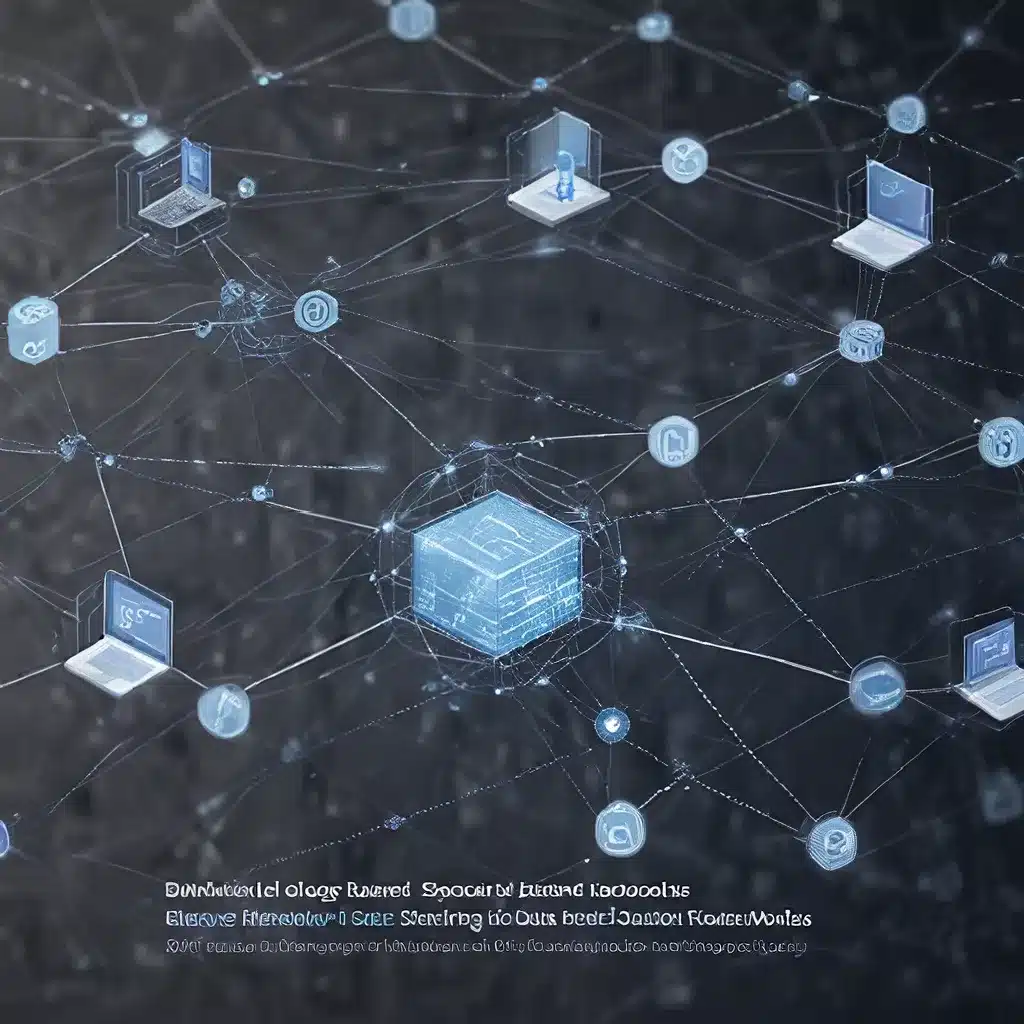
The Evolving Landscape of Sensor Networks and IoT
Sensor networks and the Internet of Things (IoT) have become ubiquitous in our increasingly connected world. From monitoring environmental conditions to enabling smart city applications, these technologies are revolutionizing how we collect, process, and leverage data. As the adoption of sensor networks and IoT continues to grow, the need for secure and efficient data management has become more crucial than ever.
One emerging solution to address these challenges is the integration of distributed ledger technology (DLT), such as blockchain, into sensor network architectures. By leveraging the inherent security and transparency of distributed ledgers, sensor networks can enhance data integrity, enable secure transactions, and facilitate trusted data sharing across a wide range of industries and applications.
Distributed Ledger Technology: Powering Secure Sensor Network Transactions
Distributed ledger technology, often referred to as blockchain, is a decentralized, consensus-driven system for recording and verifying transactions. In the context of sensor networks, DLT can play a pivotal role in securing data transactions and facilitating trusted data sharing among various stakeholders.
One study highlights the advantages of integrating DLT into sensor networks, including:
- Immutability: The distributed, tamper-resistant nature of the ledger ensures that sensor data and transactions cannot be easily altered or compromised.
- Transparency: All network participants can view and verify the recorded transactions, fostering trust and accountability.
- Decentralization: The absence of a central authority eliminates single points of failure, increasing the resilience of the sensor network.
- Automated Transactions: Smart contracts embedded in the DLT can facilitate automated, self-executing transactions based on pre-defined conditions, streamlining the data exchange process.
By incorporating these DLT-powered features, sensor networks can enhance data security, enable trusted data sharing, and unlock new opportunities for sensor-driven applications and business models.
Secure Data Transactions in Sensor Networks
One of the primary advantages of integrating DLT into sensor networks is the enhanced security of data transactions. In traditional sensor network architectures, data is often transmitted and stored in a centralized manner, making it vulnerable to cyber threats and unauthorized access.
Recent research has shown that by leveraging blockchain-based approaches, sensor networks can mitigate these security risks and ensure the integrity of sensor data. Key benefits include:
- Access Control: The distributed ledger can manage and enforce access permissions, allowing only authorized entities to view and interact with sensor data.
- Tamper-Proof Records: The immutable nature of the blockchain prevents any unauthorized modifications to the sensor data, ensuring its reliability and trustworthiness.
- Auditable Transactions: All sensor data transactions are recorded on the blockchain, providing a transparent and auditable trail for enhanced accountability.
Moreover, the integration of smart contracts into the DLT-enabled sensor network can further automate and streamline the data transaction processes, reducing the risk of human error and enhancing operational efficiency.
Trusted Data Sharing in Sensor Networks
In addition to secure transactions, distributed ledger technology can also facilitate trusted data sharing within sensor network ecosystems. As sensor networks grow in scale and complexity, the need for seamless and secure data exchange among various stakeholders, such as manufacturers, service providers, and end-users, becomes increasingly vital.
One study demonstrates how blockchain-based approaches can enable trusted data sharing in sensor networks:
- Decentralized Data Ownership: The distributed nature of the ledger empowers sensor owners to maintain control over their data, while still allowing for secure sharing with authorized parties.
- Transparent Data Provenance: The immutable record of transactions on the blockchain provides a clear audit trail of data provenance, enhancing trust among data consumers.
- Automated Data Access Control: Smart contracts can automatically manage and enforce data access permissions, streamlining the sharing process and reducing the risk of unauthorized access.
By leveraging these DLT-powered capabilities, sensor networks can foster greater collaboration and facilitate the exchange of valuable data across various industries and applications, unlocking new opportunities for data-driven decision-making and innovative services.
Energy-Efficient Sensor Network Design with DLT
As sensor networks continue to expand, the energy consumption of these systems has become a critical concern. Integrating distributed ledger technology into sensor network architectures can also contribute to improved energy efficiency.
One key advantage of using DLT in sensor networks is the decentralized nature of the system, which reduces the need for energy-intensive centralized infrastructure. Additionally, smart contracts embedded in the DLT can automate and optimize energy-related processes, such as:
- Dynamic Resource Allocation: Smart contracts can intelligently allocate network resources based on real-time sensor data and energy consumption patterns, minimizing energy waste.
- Renewable Energy Integration: DLT-enabled sensor networks can seamlessly integrate with renewable energy sources, facilitating the adoption of sustainable energy solutions.
- Incentive Mechanisms: The blockchain-based nature of the network can enable the creation of innovative incentive mechanisms, encouraging energy-efficient behaviors among sensor network participants.
By incorporating DLT-powered energy management strategies, sensor networks can enhance their overall sustainability and contribute to the development of more energy-efficient and environmentally-friendly** IoT systems.
The Future of Secure Sensor Networks with Distributed Ledger Technology
As the sensor network and IoT landscapes continue to evolve, the integration of distributed ledger technology is poised to transform the way we design, manage, and secure these systems. By enhancing data security, enabling trusted data sharing, and optimizing energy consumption, DLT-powered sensor networks can unlock a new era of innovative applications and data-driven insights across a wide range of industries.
Sensor-networks.org is at the forefront of this technological revolution, providing cutting-edge research, industry insights, and practical guidance to help organizations leverage the power of secure, efficient, and collaborative sensor network solutions. Stay tuned for more transformative developments in this rapidly evolving field.